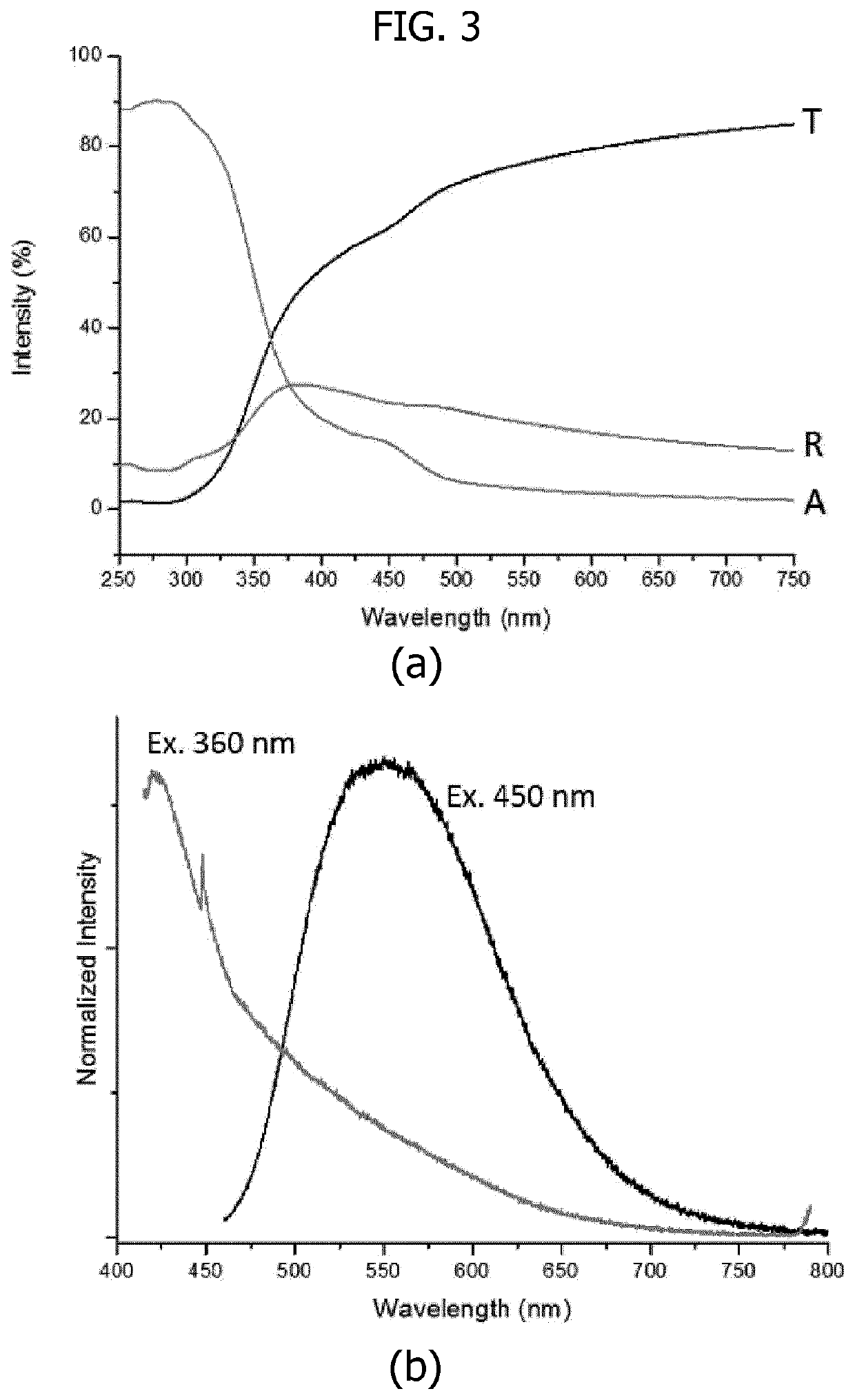Scintillating nanocomposites
a nano-composite and nano-composite technology, applied in the direction of instruments, nuclear engineering, conversion screens, etc., can solve the problems of deterioration of the transparency of the scintillator nano-composite, deformation of the final product, etc., and achieve the effect of high quality, less complicated, and high-quality scintillator materials
- Summary
- Abstract
- Description
- Claims
- Application Information
AI Technical Summary
Benefits of technology
Problems solved by technology
Method used
Image
Examples
example 1
Polyurethane Filled with Y3Al5O12:1% Ce Nanoparticles (˜20 Vol. %)
[0040]11.498 g of Aluminium isopropoxide, 11.336 g of Yttrium acetate hydrate and 0.111 g of Cerium acetate hydrate were blended together with mixture of solvents: 1,4-butanediol and diethylene glycol in mass ratio 9:1. The colloidal solution was stirred on a hot plate for 3 hours with mild heating of 50 degrees Celsius. After the mixture was homogenized, it was poured into a high pressure autoclave vessel. Air present in the autoclave was flushed away with Argon before the mixture was heated to 225 degrees Celsius for 60 hours with a heating rate 1.5 degrees Celsius / min. At the end of process the mixture was cooled down to obtain a translucent yellowish suspension.
[0041]Next, 9 g of the obtained dehydrated suspension was rapidly mixed with 16 g of dehydrated 1,6-diisocyanatohexane and 1 drop of dibutyltin dilaurate. The viscous material was poured out into Teflon mold and kept in an oven at 60 degrees Celsius for 8 h...
example 2
Polyurethane Gel (PU Gel) Filled with Lu2Gd1Al5O12:1% Ce Nanoparticles (˜35 Vol. %)
[0046]6.008 g of Aluminium isopropoxide, 7.529 g of Lutetium acetate hydrate, 3.350 g of Gadolinium acetate hydrate and 0.104 g of Cerium acetate hydrate were blended together with mixture of solvents: 1,4-butanediol and diethylene glycol in mass ratio 9:1. The colloidal solution was stirred on a hot plate for 3 hours with mild heating of 50° C. After the mixture was homogenized, it was poured into a high pressure autoclave vessel. Air present in autoclave was flushed away with Argon. The mixture was heated to 225 degrees Celsius for 60 hours with a heating rate 1.5 degrees Celsius / min. At the end of process the mixture was cooled down and translucent yellowish suspension was obtained.
[0047]5 g of the obtained dehydrated suspension was rapidly mixed with 6.5 g of mixture of Polymeric MDI (a mixture of oligomeric polyisocyanates) and an MDI isomer (isocyanates (1-isocyanato-4-[(4 isocyanatophenyl)methy...
PUM
| Property | Measurement | Unit |
|---|---|---|
| diameter | aaaaa | aaaaa |
| diameter | aaaaa | aaaaa |
| pressure | aaaaa | aaaaa |
Abstract
Description
Claims
Application Information
 Login to View More
Login to View More - R&D
- Intellectual Property
- Life Sciences
- Materials
- Tech Scout
- Unparalleled Data Quality
- Higher Quality Content
- 60% Fewer Hallucinations
Browse by: Latest US Patents, China's latest patents, Technical Efficacy Thesaurus, Application Domain, Technology Topic, Popular Technical Reports.
© 2025 PatSnap. All rights reserved.Legal|Privacy policy|Modern Slavery Act Transparency Statement|Sitemap|About US| Contact US: help@patsnap.com



